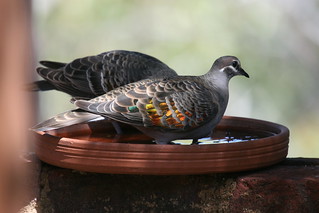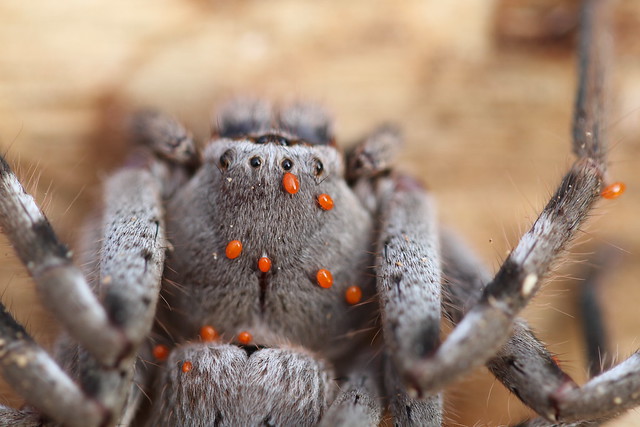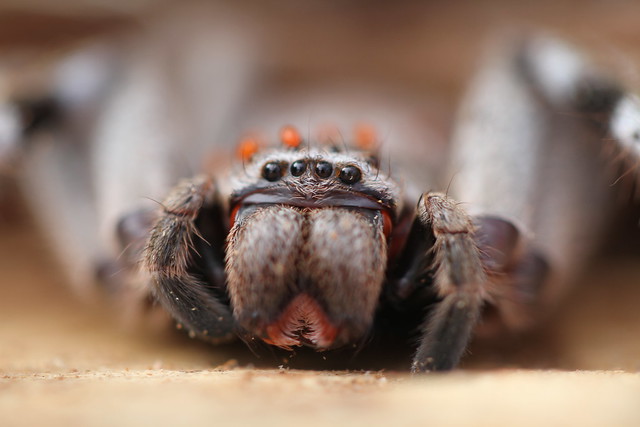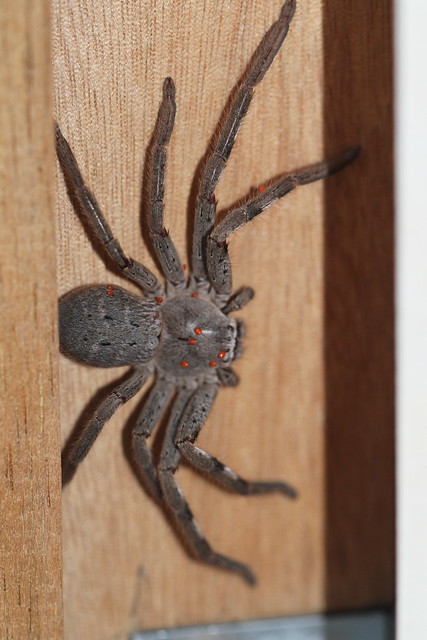It's a speedy kind of creeping but that's what it is.
However yesterday I watched a male treecreeper working its way to a newly set up birdbath with what could only be called great trepidation.
 |
| Treecreeper at bottom left of trunk |
On arriving at the bird bath it been harassed by a pair of blue wrens and retreated immediately.

It stayed for a minute or so at the base then gradually worked its way up towards the bowl of water not knowing that the wrens had departed.

Once at the top, the treecreeper worked its way around the bowl's edge, and one of the wrens returned but the demeanour of the two was very different this time and the wren skedaddled.

Alone again, the treecreeper took its time.
 |

The water was still and the bird appeared to be noting its reflection, touching its beak to the surface of the water several times.
It then took several steps into the bowl and settled down into the water very gently.
It splashed a little twice and then it flew away!
The blue wrens didn't return until another bird came for its bath ... but that's another story.
White Throated Treecreeper: Cormobates leucophaea










